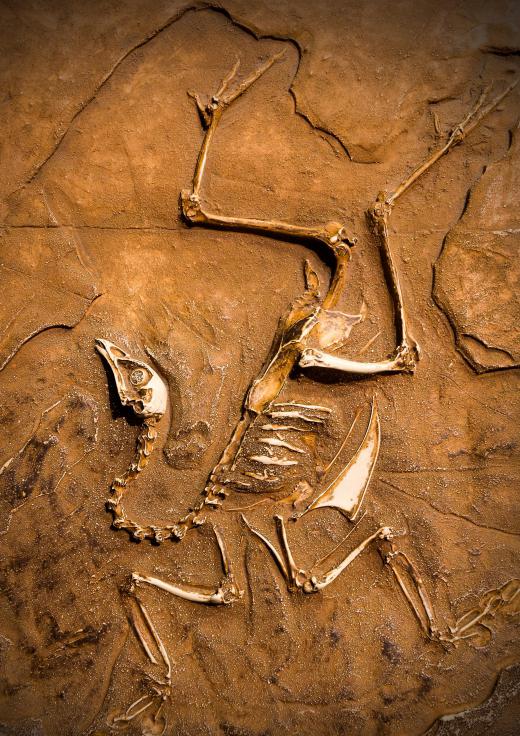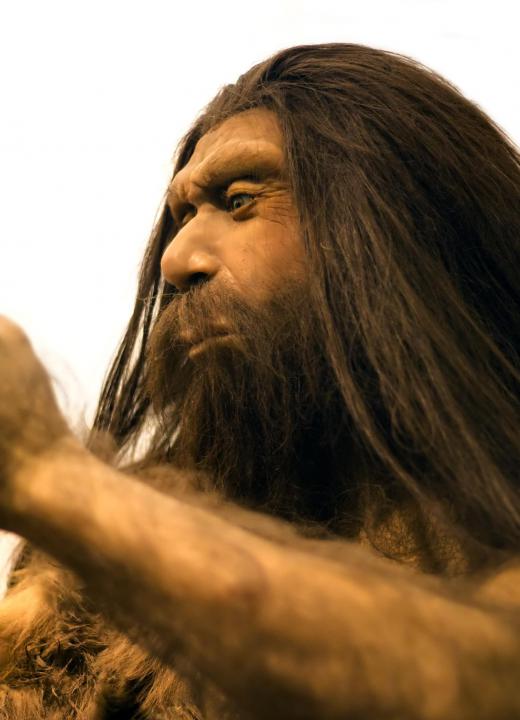What are Some Fossil Organisms That are Difficult to Classify?
 Michael Anissimov
Michael Anissimov
Sometimes, paleontologists dig up fossils that are hard to classify. Some fossils are so cryptic that there isn't even any agreement as to what animal phylum they belong to. Some, like the Vendozoa, mysterious quilted "mattresses" and bags from the Ediacaran period, about 600 to 542 million years ago, have been tentatively been assigned their own phyla. Others remain unplaced, with conflicting interpretations as to their affinity. A fossil whose classification is unknown is referred to as incertae sediis, Latin for "uncertain placement".
Fossils organisms that are difficult to classify are most numerous from the dawn of multicellular life, during the Edicaran and Cambrian periods. Multicellular life emerged in the Ediacaran, about 600 million years ago. Fossils from this time are so primitive it's hard to tell what they are. One of these fossil organisms is Cloudina, one of the first biomineralizing organisms, of which only a calcereous tube remains. Various experts on fossil organisms either call it a primitive sponge, a coral-like cnidarian (relative of jellyfish), or even an early segmented worm.

The fossil organisms of the Ediacaran biota are among the most mysterious, because there are so many of them and there is little consensus on the classification of any but a few. The Ediacaran biota comprised the first known multicellular ecosystems, and as stated earlier, consisted of various fluid-filled bags, fronds, and mattresses with a characteristic quilted pattern. One iconic member of the Edicaran biota, Charnia, looks somewhat like a modern-day cnidarian, the sea-pen, leading some scientists to classify Ediacaran biota as cnidarians without stinging cells, but other researchers call them lichens, fungi, giant protists, basal metazoans, bacterial colonies, and more. The question is still unsettled.

Other fossil organisms that have been a challenge to classify come from the Cambrian period, which occurred immediately after the Ediacaran. One of the most famous is the predatory shrimp-like creature Anomalocaris, whose constituent pieces were once thought to be three distinct organisms. Initially, one of its detached "arms" was thought to belong to a crustacean, its mouth, shaped like a pineapple slice, was mistaken for a jellyfish, and its body was classified as a sponge. It wasn't until 1985 that scientists realized that these were parts of a predatory proto-arthropod, the largest known Cambrian predator at up to a meter long.
Other fossil organisms that have proven difficult to classify include the Cambrian Wiwaxia, Opabina, Odontogriphus, and many others. After the Cambrian, many organisms settle into well-established phyla and become easier to classify.
AS FEATURED ON:
AS FEATURED ON:












Discussion Comments
@everetra - I hardly think we need to redraw the evolutionary true to account for a few “exceptions” to the rule.
From the examples given in the article, it appears that the misclassification was owing to human error, not that there was anything wrong with the taxonomy.
I prefer that these unclassified organisms remain in a holding pattern so to speak, until we learn more about that them so that we can classify them properly.
I believe that the only justification for redrawing the evolutionary tree would be if we found a lot of organisms that could not be neatly packaged, not a few here and there.
I guess the issue here is that through evolution organisms don’t always reveal a nice, tidy set of features which make them easy to classify.
Some organisms have features from multiple phyla, and that’s what makes the taxonomy difficult. Perhaps in the end we will discover that our current taxonomy in itself is incomplete, and that we will need to rewrite it – or redraw it – to allow for these additional species to accommodate their own boxes or niches.
I read once that some microbiologists are discovering traits of organisms which make them unrelated to their nearest cousins in the taxonomy tree. In other words, a species that you may have thought was descended from one animal may in fact be related to another one altogether.
If that is the case, then I think we have a basis for redrawing our taxonomies to accommodate these new fossil specimens.
Post your comments